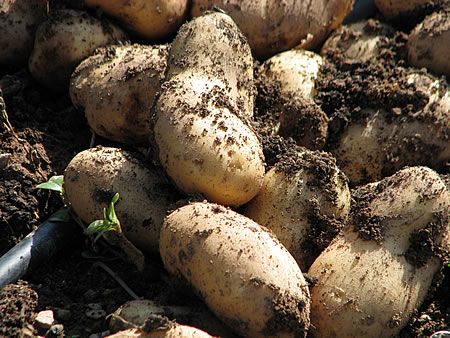
Plant characteristics
Plant Type:
- Vegetables
- Annual
Sunlight Requirements (where to plant related to sun)
- Full Sun
- Full Sun or Partially Shade
Soil Type (type of soil plant needs)
- Soil with Good Drainage
- Soil with Drainage but Wet
Climate Type (how tollerant is to frost?)
- No Frost Tolerant
Fragrant Plant (do flowers have an aroma?)
- No Fragrant Flowers
Difficulty Level (how hard is to cultivate this plant?)
- Easy
Showing Season (which months can we sow seeds)
- January
- August
- September
- December
Planting Season (which months can we plant or transplant)
- January
- August
- September
- December
How to grow Potatoes
Potatoes are an important crop for any grower who wants to be self-sufficient or wants to have flavor on his plate. Potatoes are easy to grow, very nutritious and there are numerous varieties. Some are ideal for roasting, some for salad, some for fries. You should try growing them!
Other names for potatoes
Latin name: Solanum tuberosum, Solanaceae family
Greek name: Πατάτα (single), Πατάτες (plural)
Potatoes grow underground in the soil; you should make sure that there is enough soil around the root of the plant so that the potato tubers can continue to grow underground.
Tips for growing potatoes
How to plant potatoes
Potatoes are planted not by seed, but by using small potatoes that have bulbs called potato seeds or potato tubers. If the potato seeds to be sown, are relatively large and bear many bulbs, you can cut them into smaller pieces. Each piece should carry one or more eyes.
They have two growing seasons.
Plant potato seeds from December to late January for Spring harvest.
Plant potato seeds from mid-August to late September for Winter harvest.
Sowing distance and depth
Place small potato seeds 7 to 10 cm deep and 30 cm apart. Expect the first plants to appear 2 to 3 weeks after sowing.
Special treatment
As the plants grow and the potato tubers develop underground, you should put soil around the root of the plant. This ensures that more potatoes will grow underground.
Best soil for potatoes
The ideal soil for growing potatoes has the following characteristics:
- Well-drained
- Rich in organic matter
- Slightly acidic pH (6.0 – 6.8)
In general, the soil should be soft so that the potatoes can grow in it and have room to grow without being strained during growth.
We recommend enriching the soil with organic elements, e.g. compost or manure.
Harvesting potatoes
Potatoes are ready when the plant starts to dry out.
In between however, you can remove some potatoes by removing the soil around the root of the plant. Don’t forget to cover the roots again.
Nutritional value of potatoes
The potato has been associated with unhealthy foods because it is usually served fried.
In fact, potato is a very nutritious vegetable.
An average potato (173 grams) has 163 calories, no fat, is an excellent source of potassium (helps control blood pressure) and vitamin C.
It is also a good source of natural fiber, magnesium, copper, magnesium, niacin, vitamin B6 and folic acid.
Potatoes are also a source of chlorogenic acid, a phytochemical that research has shown can block the formation of carcinogenic nitrosamines and reduce the risk of cancers of the liver (liver) and rectum (colon).
A recent British study discovered substances called kukoamines in potatoes that can reduce blood pressure levels.
Note: All of the above applies if instead of frying potatoes, you eat them boiled, baked, or roasted.
Cooking Tip: Try baked potatoes in the oven or on the stovetop after wrapping them in aluminum foil. Do not peel the skin. Bake the potatoes whole. You will be impressed by the taste! It is a very common way of baking potatoes in Greece.
